[Otto Weigand, Agricultural Agent, University of Wisconsin-Extension]
Our next speaker’s gonna launch us into wolf and other predator programs in Wisconsin. And his name is Brad Koele and I’ll just bring him right on. Thank you, Brad.
[Brad Koele, Wildlife Damage Biologist, Wisconsin Department of Natural Resources]
Thank you, Otto.
Good morning. Thanks for being here. I mean, such a beautiful Saturday and you guys are spending it with us, and – and thanks for allowing me to come and – and talk the department’s or the state’s – basically our – our wolf and bear management programs. Dave McFarland was originally on the agenda to talk about state management of – of wolves and bears. Dave couldn’t make it, so I’ll be providing his – his talk or – or, you know, his overview of management actions the state’s taking, but then I’ll also dive into our – our compensation and – and damage programs for – for those species as well.
I’ve been with the D.N.R. since 2001. I – I started out within our big game program, focusing primarily on – on deer and bear. And then in 2007 I transitioned to our Wildlife Damage Program where I administer all aspects of – of the state’s nuisance and urban and agricultural damage programs with – with wildlife, so – been – been doing that, like I said, since 2007, so for the past ten years, wildlife damage has – has been my – my primary focus. So today, I’ll get into the – to the bear and wolf management programs. The bear population and – –
[slide titled, Bear Population and Management, featuring a photo of a black bear swimming in a river]
– and management.
[new slide featuring a color-coded map of Wisconsin showing where the bear populations are with bears being abundant in the upper third of Wisconsin, Common in the middle and central and west areas of Wisconsin near the Mississippi river and transient or not present in the rest of the state]
This is a statewide map showing the primary range in – in bear distribution. No surprise there – the northern third of the state, abundant and common, bear sightings there. As – as you go kind of southwest, bear sightings are becoming more – more frequent down there. Bears are expanding their range southward. Southeast –
[Brad Koele, on-camera]
– not as many sightings there and – and particularly, down in the lower southeast corner of the state, very few, if any, bear sightings there, but, you know, the take home message there is – is the – the bear population’s doing very well and they are expanding their range southward.
There’s primarily three different things that we do to monitor the bear population. One is – is –
[slide titled, Bear Population Monitoring, with the following bulleted list – teeth collected and aged every year; annual bait station survey – 25 mile transect, 50 baits per transect, 1-2 transects per county, trends used to calibrate population model; intensive tetracycline-based capture – recapture population estimate every 5 years, 4 baits per township, volunteers help with the baiting effort, ribs collected at registration]
– the annual bear harvest. We do collect teeth from every bear or – or attempt to collect teeth from every bear. And that gives us age data, tells us how old the bears are that are being harvested and obviously if there’s a shift in that age, it’s an indicator of – of whether or not that – that population, whether or not it’s aging or – or people are harvesting younger bear. So, it gives us, you know, an index to look at as far as how the bear population’s doing.
The other thing that is – we do is the annual bear bait station survey, so there are 20 – 25 mile transects where we’ll place a – a meat bait – we hang meat approximately 7 feet in trees, every half mile. And then we – we come back after a week, and – and check those baits to see if they’ve been hit by a bear. Those baits sit out there for a week, and – and again, that gives us another index or a trend line on how that bear population is doing.
The other one is a tetracycline recapture or – or mark-recapture study. Basically, for that study, the first year we – we did it was in 2006. Lot of cooperation from that study with U.W. and then also the Wisconsin Bear Hunters Association.
[Brad Koele, on-camera]
They help out immensely with – with that, ’cause it’s such a labor-intensive monitoring method. But basically, tetracycline baits are placed out on a landscape. For those of you that are – are aware of tetracycline, what it does is it – it creates a marker in the bone structure, so basically it creates a – a ring in the bone structure of the bear, and then as bears are harvested, we require hunters to submit a rib sample to us so we can look for that marker, and then it’s used to – you know, the proportion of marked versus unmarked bear used to – to do reconstruction model and, you know, give us an estimate. So, 2006, that was done. 2011, that was done. This year, it was supposed to be done again, here in 2016, but there’s some new F.D.A. restrictions on broad-scale use of antibiotics. Obviously, there’s some concerns with creating immunities to the antibiotics so tetracycline can no longer be used so we’re exploring other options. My understanding is Rhodamine B is potentially an alternative that we’ll be looking for – for continuing this type of estimation method. And it does basically the same thing – from my understanding, is it creates a marker in the bone structure of the animal that we can – we can use to see whether or not it ingested, you know, the – the – the bait.
So, this is an example of the – the –
[slide featuring a map of Wisconsin and a photo of a black bear climbing a tree to a trap. The map of Wisconsin is divided up into four general locations of bear bait stations – three in northern Wisconsin (from left to right labelled, D, A, B) and one for the rest of the state (C). The slide also notes that the baits are wired to a tree at more than seven feet high and that the traps are checked after seven days. There are 18 transects in A, B, and D and 7 in C]
– bear bait transect. So, 18 transects across the northern part of the state in zones A, B, and D. We currently have seven transects in – in zone C that we run. And again, these are – are 25 mile transects where – where baits are placed every half mile.
[new slide featuring a photo of a black bear eating the bait in a tree taken from a D.N.R. camera which is above the bear looking down]
This is a – a picture of kind of what it looks like. This is from Michigan D.N.R. They – they have a little bit different process, but this a bear that, you know, obviously, has, um – you know, is ingesting that – that bait.
[new slide featuring a photo of bear markings on the side of a birch tree]
Some of the things we look for to make sure it was a bear is, you know, markings. These baits are all placed in soft – soft trees, soft-barked trees so you can – you know, more likelihood of – of getting some type of markings from the animal. Bear, this one’s not too hard to tell. You know, you can see a pretty good muddy paw print of a bear there on the tree.
[new slide featuring a photo of another birch tree that has bear scratch marks on it]
Other indications would be scratch marks.
[new slide featuring a photo of bear scratchings on a birch tree with a person holding up a compass and a gauge on cardboard for determining if the marks are from a bear or not by number of claws]
We – we do have a gauge that we use that looks at the spacing of those claw marks to – to verify if it was a bear or not. Nonetheless, all – all – these – these techniques, this bear bait transect –
[Brad Koele, on-camera]
– is used every year to create that index and – and tell us how – how well that bear population’s doing each year.
This is – this is a snapshot of Vilas and Oneida County –
[slide featuring a map of Vilas and Oneida counties in Wisconsin with small pink squares in a grid pattern showing where the bait traps are in the counties]
– there of our tetracycline study. So, the idea there is that we place small wooden boxes with – with a bait inside with – with a tetracycline, you know, every three miles within – within the township there. So again, you dot the landscape.
[new slide titled, Bear Tetracycline Survey, with a grided map of northern Wisconsin showing all the bear bait locations and then having a red dot if the trap was hit by a bear or a gray dot if it was not hit by a bear]
And it’s a pretty – pretty incredible effort. This is what it looks like across the northern part of the state there, so there – each one of those boxes or – or squares there is where tetracycline bait was placed out there. The red color there was the baits that were hit by bear or that we know were hit by bear. So, a pretty – pretty huge effort going out across the – the northern part of the state there. You know, to show us exactly where –
[Brad Koele, on-camera]
– where bear are.
And – so, it’s the same concept. We have a little wood box with some bait and a bear – a tetracycline tablet in that box and the bear obviously finds that bait, breaks it open and consumes – consumes that tetracycline and then, you know, then the hunter-harvested bear, we – we collect rib tissues from those bear and then we use it to – to reconstruct a population.
So, this is a trend line of the –
[slide titled, Statewide Bear Population, featuring a graph with the year starting in 1988 on the x-axis and the estimated number of bear on the y-axis and showing a steady increase in the bear population year-over-year]
– the statewide bear population. As you can see, its – we have a very healthy population across the state – it – it is increasing. Right now, our current – current estimate of bear – the bear population is 28,650, so, you know, pretty good population. Like I said that – that population seems to be expanding their range southward and – and certainly occupying a lot more of – of particularly the southwest –
[Brad Koele, on-camera]
– part of the state.
So, of course, with – you know with –
[slide titled, Black Bear Harvest History, 1957 to Present, featuring a graph of the bear harvest with the year starting with 1957 on the x-axis and the number of bears harvested on the y-axis and showing an increase in the bear harvest year-over-year since around 1987]
– with a growing population, you also need to manage that population. We – we primarily manage a lot of our wildlife species through hunting or trapping. Bear, its – it’s hunting, in – in the state here. We do allow the use of bait and – and the use of hunting with hound dogs in the northern part of the state. So, you know, we’ve – weve tried to – or – or we use hunting as a method to control the bear population. You can see there, our harvest along with the population has – has also increased as the population’s increased.
One thing to note there, you see the absence of any information for 1985. 1985, the state actually closed bear hunting. At that point the population was right around 4,500 animals, and – and at that point the state felt, you know, “We need to close the hunting season, implement more of a structured harvest.” Prior to that, bear could be harvested during the – the deer hunting season with I think a small game and even a gun deer hunting license, so license restrictions were pretty loose, so in 1985 is when we had kind of the current season structure or – or permit system that was implemented there, and as you can see –
[Brad Koele, on-camera]
– with those protections, with limited quotas, you know, the bear population has really done well since that point.
Ah, the state is broken into four zones there, as you can see: A, B, C, and D.
[slide titled, Bear Management Zones, featuring a map of northern Wisconsin divided into four different zones from left to right – D, A, B in the far north and then the fourth zone, C as the rest of the state]
A and D, at one point in time, were a contiguous unit. And even D was actually a subzone of zone A at one point, but nonetheless it is now its own zone. We’re here in Washburn County of course, and – and that’s Bear Management Zone D. But these are – are – the – the zones that we use for setting our – our bear quotas and – and season structures every year – our harvest structures every year.
[new slide titled, Bear Harvest Permits 1986 to 2015, featuring a bar graph with the year on the x-axis starting in 1985 and the number of bear hunting permits in thousands on the y-axis and showing a great growth in the number of permits starting around 2008]
The permit levels, you know, have – have gone up, you know, as the bear population’s increased. We’ve recognized the need to harvest additional bear, so our permit levels and quotas have – have also increased. 2016, this will be another record year with permit levels out there. You know, we’re expected to issue approximately 11,520 bear permits this year, So, you know, certainly –
[Brad Koele, on-camera]
– a lot of pressure on that bear population to, you know, keep – keep numbers as, you know, best we can – that – that’s both socially and biologically acceptable to – to the public.
Applicants – you know, Wisconsin is, um –
[slide titled, Total Applicants (Preference Point and Class A) 1986 – 2015, and featuring a bar graph with the year starting at 1985 on the x-axis and the number of bear hunting permits in the thousands on the y-axis and showing an exponential increase in applications year-over-year]
– you know, we’re – were kind of a destination state for bear hunting. Our success rates here in Wisconsin for hunting are – are unmatched by any other state, even in zone C where our success rate is, you know, probably down in the upper 20%. That’s higher than a lot of states have. You know, then you get into the northern part of the bear range, where you’re – youre looking at zones A, B, and D, you know, our success rates are 60% or higher, which are just incredible for – for bear hunting. So, Wisconsin’s got a lot of interest, you know, from non-residents and even within the state for hunting. Our application levels have increased, you know, pretty steadily. You know, right now were around 110,000 applicants is what we receive each year. So, a huge interest in – in, you know –
[slide titled, Bear Damage/Nuisance Management, featuring three photographs, one of a bee keeping operation totally destroyed by bears, one of the side of a house that has bear damage on the siding, and one of a black bear in a garden that has totally destroyed]
– hunting bear in Wisconsin.
[return to the Total Applicants slide previously]
I guess before I get to that, you know, that interest in – in bear – bear hunting has led to long wait times for permits.
[Brad Koele, on-camera]
You know, our wait times for permits range anywhere from one year all the way up to nine years, so you know, in zone C right now, the southern part of the state, maybe every year, but for sure every other year you can likely expect a permit in zone C. You get up to zone B in the northeast part of the state, those wait times are as long as nine or ten years for a permit. So that interest is certainly nice, but it’s definitely led to some long wait times. And – and historically, in the state, hunters have preferred kind of a high-quality, high-success hunt over a lot of opportunity, so we haven’t made any changes to – to our – our kind of season structure to – to change that, because, you know, hunters have preferably or historically preferred that higher-success type hunt.
Of course, with that high – high population, you know, we do have a lot of conflicts with bear –
[return to the Bear Damage/Nuisance Management slide featuring the three photos of bear damage]
– so, our bear program is broken down into basically two different components. One is the agricultural damage, and the other side is – is nuisance management. And – and it – it’s basically exactly what it entails. Agricultural damage is your apiaries, your typical row crops, your livestock, where nuisance management is – is more the home issues, bird feeders, stuff like that.
[new slide titled, Wildlife Damage Abatement and Claims Program (WDACP), and featuring two columns of bulleted lists – the first is program History – started in 1931, current structure was created in 1983, and the second Program Funding – $2 license surcharge ($4 patrons license), antlerless deer tag revenue]
In Wisconsin, we’re – were really fortunate as far as, you know, wildlife damage programs are concerned across the nation. We have excellent partners. We have U.S.D.A. Wildlife Services, U.W.-Extension that are great – great cooperators for us. You know, we also have a state legislature and state leadership that are, you know, committed to assisting farmers that are – that are having problems or anyone having problems with – with wildlife issues.
In this state, we have the Wildlife Damage Abatement and Claims Program, which originally started in 1931. The current structure of our program was actually created in 1983, though. So, we’ve had that program in place for – for quite a while now and it’s funded through hunting license sales. It’s a $2.00 surcharge on each –
[Brad Koele, on-camera]
– hunting license and a $4.00 surcharge on each patron’s license. And then our program also receives revenue from the sale of antlerless deer carcass tags. Those are the tags that are $12 for residents, $20 for non-residents. That revenue, outside the chronic wasting disease areas, goes into our program. Within the chronic wasting disease areas, we get $7.00 from each of those tags that goes to our program.
By state statute, it’s a state program, but it has to administered through the participating – or through counties. Basically, each county –
[slide titled, WDACP County Administration, showing a map of Wisconsin and its 72 counties and showing who administers the damage program for each county – Greg Cervin in three southeastern counties, Cindy Blonk in two northeastern counties, Dave Schultz in the four most northern counties, and then the U.S.D.A. for 80% of the rest of the counties or the counties themselves for the final 20%]
– all counties participate except for Kenosha and Menominee Counties. All the other counties do. The counties in blue color there, those are counties that choose to contract with U.S.D.A. Wildlife Services. So, U.S.D.A. Wildlife Services implements the program in those counties. And then the white counties, green, red, and – and purple, those are counties that either have an independent damage technician implement the program or they have a county employee administer the program there. So, we can see Wildlife Services does – right now, they administer the program in – in 52 counties, and then independent counties we call them are – are 18 independent counties.
[Brad Koele, on-camera]
So, under the program, the species that are eligible are deer, bear, turkey –
[slide titled, Eligible Species s.29.889, featuring six photos top to bottom, right to left – top – a photo of geese on a lake, a photo of wild turkeys on a prairie, middle – a photo of a black bear in a tree, a photo of a cougar in a forest taken by a D.N.R. tree camera, bottom – a photo of an elk in the woods, and a photo of a deer in the woods]
– elk, geese, and a couple of years ago, cougar were added to – to that program. We have not had any verified cougar depredations in the state but the legislature a few years ago wanted to be proactive. As you’re all aware there’s – theres, you know, sightings of – of cougars and – and they periodically come through the state, and the legislatures, you know, wanted to have some type of a – a compensation program available if – if depredations became an issue.
[Brad Koele, on-camera]
So, cougars are included under the program, but we have not had any conflicts with them.
Incidentally, sandhill cranes are also in state statute as being covered under the program, but not until there’s a hunting season for sandhill cranes.
The type of – of crops that are covered is also in –
[slide titled, Eligible Damage, and the following list – agricultural crops (corn, sweet corn, alfalfa, soybeans, potatoes); Truck crops (cranberries, cabbage, other fruits and vegetables); stored crops following normal agricultural practices; orchard trees; Christmas trees; Nursery stock; Apiaries; Livestock. The slide also has three photos at the bottom showing damage to – a corn field, a pumpkin patch, and a nursery]
– state statute, and, you know, it’s your standard row crops, your corn, soybeans, alfalfa, that stuff. Truck crops – you know, so the gardens that are – are out there that, you know, may sell produce at farmers’ markets, or along the roadside; those are eligible. Stored crops, silage bags. You know, we do have a fair number of silage bag issues each year from bear. Stored feed, so that – that’s eligible. Orchards, Christmas trees, nursery stock, apiaries – a lot of issues with bear and apiaries around the state, and then of course livestock is –
[Brad Koele, on-camera]
– also included under the program.
So, to enroll in a program, basically the county has to participate. Most of them do, like I said.
[slide titled, Enrollment Criteria, with the following bulleted list – county must be participating in the program; damage must be from an eligible species and an eligible crop; notify damage specialist within 14 days of damage first occurring if they want to be eligible for compensation; enrollee must control hunting access]
Damage must be from one of those eligible species. And then, you know, typically with livestock, this doesn’t apply, but for the typical row crops, is that the damage specialist has to be notified within 14 days of damage occurring, and – and obviously that’s so we can get abatement out there and try to prevent –
[Brad Koele, on-camera]
– or reduce the amount of damage that’s occurring. So, that 14-day requirement is – is in place. And then, also, because this program is funded through hunting license sales, the enrollee must control hunting access on that property. One of the requirements for enrolling in this property is that public hunting access is required on the property. You know, like I said, it’s funded through hunting license sales, so the state legislature, when they created the program thought hunters should have access to assist, you know – assist with the – the species that’s causing damage on those properties. So, if you’re enrolled for bear damage, you have to allow public hunting access for bear. You don’t have to allow it for deer or any other species. If you’re enrolled in the program for – for deer damage, you would have to allow public hunting access for deer. There are a couple exceptions where that doesn’t apply to deer, but most cases, hunting is – is required on those properties. And there’s no fee for enrolling in the program. It’s a voluntary enrollment. There’s no fee for – for enrolling in the program. But there is that public hunting access requirement.
So, bear enrollment, as you can see –
[slide titled, WDACP Bear Enrollments Years 2008 to 2015, and featuring a bar graph with the years starting with 2008 on the x-axis and number of enrollments on the y-axis, and showing an increase year-over-year with bear enrollments]
– it’s, in general, on the increase. You know, last year, 290 individual farmers enrolled for bear damage. You know, and that can be standard row crops. A lot of our bear damage issues are – are, you know, corn in the milk stage when – when the bears are hitting them, but we do have a fairly significant number of apiary owners that also enroll in our program to – to receive some assistance. So basically, damage occurs. You contact the county damage special – specialist. You enroll in a program.
[new slide titled, Damage Abatement, featuring a bar graph with the number of bears trapped and relocated years 2009 to 2015 as a heading and having the year starting with 2008 on the x-axis and the number of bears on the y-axis and having two lines per year – one for agricultural conflicts and one for nuisance conflicts. The graph shows an increase in agricultural conflicts year-over-year and a slight decrease in nuisance conflicts year-over-year. The slide also has a photo of a bear trap in the lower left-hand corner]
The next step would be determining what abatement is – is best. For bear, whether it’s agricultural damage or nuisance situations, our – our primary abatement method is trapping and relocating the bear. Bear are – are relocated a minimum of 25 miles and on to contiguous large tracts of – of land under public ownership. So, whether it’s county, state or – or national forest, that’s where the bears are relocated. They’re not relocated to any private properties.
[Brad Koele, on-camera]
Last year, in 2015, for agricultural conflicts, you can see 365 bear were relocated. So, a number – number of bear are being moved around the state and – and the reason, you know, it’s not probably the most cost-effective option, but hunters in – in our state, you know, have – have preferred that these bear be relocated rather than shooting permits or some other type of – of lethal control because they want the hunting opportunity for the bear. You know, if you’re waiting anywhere from, you know, one to nine years for a – for a hunting permit, a bear hunting permit, you know, you want the opportunity to harvest those animals rather than, you know, someone harvesting them with – with no preference or very little interest in bear hunting. So, you know, trapping and relocation has been primarily the – the most accepted abatement that we’ve – weve implemented.
We do, as a last resort, get the bear shooting permits.
[slide titled, Bear Shooting Permits, featuring a double bar graph labelled – Number of Ag Damage Bear Shooting Permits Issued and Number of Bear Removed, the x-axis is the year from 2006 to 2015 and the y-axis is the number of permits issued and the number of bears harvested. The graph shows a large spike in the years 2011 and 2012 with 23 and 42 damage permits issued and 56 and 107 bears harvested with bear permits]
You can see, last year we had 30 bear shooting permits, 65 bear harvested on shooting permits. One – one note I will make is that in the situations with livestock depredations – our – our response with livestock depredations is – is a lethal response. Either we trap – attempt to trap and euthanize that – that bear, or we issue – and/or issue – permit the landowner to – to shoot and remove that bear.
History, you know – livestock depredation is kind of a learned behavior, and –
[Brad Koele, on-camera]
– what we’ve found is typically once a bear depredates, it’s likely to depredate again. So, our response, you know, for depredating bears is – is, in most cases is – is a lethal – a lethal control for that.
Like I mentioned, we do have a lot of apiary issues –
[slide featuring two photos, one of two large silage bags sitting in a field behind wire fencing and the other of an apiary surrounded by wire fencing]
– and – and some silage bag issues. So, temporary fencing is – is probably our – probably the second most abatement that we use, and it’s just, you know, putting up electric fencing around those structures to protect them. It – it works extremely well. I wish I had an accurate count of how many apiaries – I – I bet you we probably have, you know, 200, 250 apiaries around the state fenced, you know, with temporary fencing like this to – to protect – protect from bears. So, it’s – its another abatement method that we use pretty commonly.
[new slide titled, WDACP Claims, with the following bulleted list – appraisal must have been done on crop by county damage specialist; it must comply with abatement measures (harvest objectives) and hunter access requirements; it must be in compliance with normal agricultural practices – crops stranded by weather are not eligible and any crops left after 90% of that crop has been harvested in the county are not eligible; county must submit claims by March 31 and D.N.R. must pay claim by June 1]
So, claims – obviously, a part of this – this program is to provide that abatement assistance but then also compensation for those damages. For the standard row crops, livestock, those prices are set by the county. Typically, the county damage specialist will – will talk with seed dealers, feed stores, U.W.-Extension, and they’ll come up with a price each year for – for those crops. The enrollees must comply with any abatement measures. You know, if we issue a deer shooting permit, those individuals have to shoot a certain number of deer on those permits to be eligible for – for compensation. You have to be in compliance with normal agricultural practices, so that means, you know, for crops left over winter, that’s typically not – you know, not a standard agricultural practice, so compensation would not be provided in those situations.
So, those – those factors are taken into consideration, and then also, you know, if they do meet all those requirements, the county submits a claim to the D.N.R. by March – March 31st –
[Brad Koele, on-camera]
– and then the department has until June 1 to pay those claims, so – I just – couple weeks ago I just finished paying, I think, 270 claims from – from the 2015 season, so we just kind of completed that process.
The payment amounts are in – are in state statute. Like I said, the county set the – the price, the price for per bushel or the price for that commodity. But then there are also further restrictions placed in state statute. So, for each claim, there’s a –
[slide titled, WDACP Claim Calculation, featuring a bulleted list – $500 deductible, 100% reimbursement up to $5,500, 80% reimbursement beyond $5,500, and a maximum claim payment of $10,000]
– $500 deductible. And then beyond that we reimburse 100% up to $5,000 – or $5,500 with that deductible in there, and then beyond that, 80% we would compensate for up to a maximum of $10,000.
[Male audience member, off-camera]
What’s your definition of crop?
[Brad Koele, off-camera]
Um, “crop” would be – it’s anything – any standard agricultural row crop, livestock –
[Brad Koele, on-camera]
– Christmas trees, nursery stock. One of those slides I had before had that whole definition of what is covered under the program. So, all that stuff is – is, you know, eligible for the program. And the county damage technician, when they go out to enroll people, you know, they verify that it’s an eligible crop type before they enroll. So, things like food plots, you know, obviously that wouldn’t be eligible. Someone’s personal garden, you know, if they – if they have a garden out there and the crops are used for personal consumption or family consumption, that would not be eligible under this program.
[Same male audience member, off-camera]
But livestock would be.
[Brad Koele, on-camera]
Livestock is, yep, correct. And again, that’s just for – for bear or cougar damage under the aspects of this program.
This was changed, 2009. The state legislature changed these in 2009. We were projecting a shortfall within the program, so in 2009 the state legislature made some changes. Prior to that, it was a $250 de-deductible and a $15,000 maximum claim, so, you know, those were decreased a little bit to make up for that projected shortfall.
Just want to mention nuisance bear management.
[slide titled, Nuisance Bear Management, featuring two photos of black bears, one on top of a bench pawing at potted plants and another one shown in the wreckage of a corn field. The slide also includes the following bulleted list – Bird Feeders; Garbage Cans and Dumpsters; Compost Piles; Residential Areas and Campgrounds; Destruction resulting in monetary damage; Agression toward people]
You know, we – we contract with U.S.D. Wildlife Services or the D.N.R. contracts with U.S.D. Wildlife Services to handle all their nuisance bear conflicts. And, you know, there – theres – there’s a number of them out there. You know, Wildlife Services responds, you know, anywhere from 800, I think, to as many as 1,500 complaints each year about bear. You know, obviously, you know, the nuisance stuff is separate from the agricultural damage, but I just want to make people aware that, you know, even if, you know, you’re – youre not having problems with livestock, you know, if you are having problems – with – with, you know, aggressive bear, or, you know, other issues that are non-agricultural, there is assistance available through U.S.D. Wildlife Services.
Interestingly enough, you know, probably 70% of those nuisance calls we get every year can be – be –
[Brad Koele, on-camera]
– solved with technical assistance. which is in many cases, removing the attractant, whether it’s a bird feeder, a garbage can, or, you know, a grill, something like that. You know, so a lot of times there’s some attractant that’s involved, but nonetheless, you know, there is assistance available for just a general homeowner or someone else that’s – thats dealing with nuisance bear issues.
Now, kind of jumping to wolf management here.
[slide titled, Wolf Management, featuring an aerial photo of a pack of grey wolves in a snowy field]
[new slide titled, 150 Wolf Distribution, featuring a map of Wisconsin and Minnesota including Lake Superior and Lake Michigan and showing wolf distribution in red on the map. The red areas are mostly in Ontario and the far northeast of Minnesota with pockets in the upper peninsula of Michigan and a small pocket in far north central Wisconsin]
So, you know, wolves were in the state, you know, as early as 1950 and – and earlier. There was a bounty in place on – on wolves that went through 1957, which, you know, through – through extensive removal and – and pressure on them led to the population decline and –
[new slide titled, 1960 Wolf Distribution, showing a similar map with wolf populations in red, but now with the pockets of wolfs removed from far north central Wisconsin and the upper peninsula of Michigan but remaining in far northeastern Minnesota and in Ontario]
– eventually the elimination of the wolves. By 1960, there was no known wolves in Wisconsin. There was a remaining population in northern Minnesota and – and Ontario, and it was through that population there –
[new slide titled, Wolf Expansion into Wisconsin, showing a similar map as before and with now a red arrow of wolfs moving from southern Ontario and far northeastern Minnesota into northern Wisconsin]
– and – and through the protections put in place by – through the Endangered Species Act during the 1970s that allowed that – that population to naturally expand and to move southward into the state again.
You know, wolves, there’s – theres a lot of misconceptions that, you know, state D.N.R. brought wolves back in. That’s not the case. Wolves, you know, expanded and – and recolonized Wisconsin through – through those remaining packs that were in northern Minnesota and Ontario. So, obviously they – they’ve expanded –
[new slide titled, Winter 1979-1980, featuring a map of northern Wisconsin that has a key of for variables – in red there is an area in Moose Lake, Bear Lake, St. Croix, and Stateline in northwest Wisconsin labelled Pack with Radio-Collared Wolves; in yellow there is an area in north-central Wisconsin labelled Pack Without Radio-Collared Wolves and indicated as the Averill Creek Pack; in light green there are three areas labelled as Probable Wolf Range – the red area, the yellow area and another area northeast of the Averill Creek Pack]
– in the state and have done quite well. This is our – our winter pack count and – and map from the winter of 1979, 1980.
[new slide titled, Winter 1990-1991, featuring the same map of northern Wisconsin but now with the Wolf range expanded throughout almost all counties of northern Wisconsin]
’90 to ’91, you can see the – the range and the packs are continuing to grow.
[new slide titled, Winter 2001-2002, featuring the same map of northern Wisconsin with the wolf range now extending throughout the entirety of northern Wisconsin and starting to push southwards as well as a pocket of wolf range now in the west-central part of Wisconsin]
2001 to 2002 winter.
[new slide titled, 2009-2010 Wolf Packs, showing the wolf range as the upper of the state as well as an expanded area in west-central Wisconsin]
Here we are, 2009, 2010.
[new slide titled, 2015 Wolf Packs, featuring a different map of the entire state of Wisconsin with the north-central and northern wolf pack ranges combining as well as showing a few pockets of wolfs further south and west near the Mississippi river]
And here’s last year’s wolf map, so you can see the population through those protections, you know, has – has done pretty well in Wisconsin. They – theyve – they’ve, you know, colonized the majority –
[Brad Koele, on-camera]
– of the prime wolf habitat in the northern part of the state and also in the center – central forest, which is that yellow area that you see in the middle part of the state.
So, how do we track the wolf population?
[slide titled, Wisconsin Carnivore Tracking Blocks 2015-2016, featuring a map of Wisconsin with the state broken up into 158 different tracking areas outlined in green]
We have carnivore tracking blocks. So, these are approximately 200 square mile areas that we – we do a variety of survey methods in those areas. Primarily, its – it’s winter track counts is what we use.
[new slide titled, Winter Track Survey Miles Completed by WDNR and Volunteers, featuring a bar graph with the year from 1996 to 2014 on the x-axis and the number of miles surveyed on the y-axis with the bars separated by D.N.R. versus Volunteer tracking and showing an increase year-over-year of miles tracked. The slide also notes that 16,730 miles were tracked over the winter of 2014-2015]
We have volunteer trackers that are trained throughout the state to, in the wintertime, drive certain transects and look for wolf tracks and then you follow them, and you try to figure out how many wolves are present there. You know, last year, 2011, 2015 winter, um, you know, over 16,730 miles were – were tracked either through D.N.R. trackers or – or volunteer trackers, so that’s the prime – primarily the method that we use. You know, utilize pack counts, and then – then numbers – wolf numbers as well.
We also use aerial survey. There’s approximately 45 wolves that are collared around the state right now. That number will increase here in the next month or two as we – as we trap and collar additional wolves. But, so, we have D.N.R. pilots that will occasionally fly these packs, locate them.
[Brad Koele, on-camera]
If they can find them, you know, they’ll – theyll count – count the number of wolves in them, but then we also have the – the trackers, and – and volunteers going and kind of ground truth and look for tracks with those same packs. So, those are primarily the – the two type of methods that we use for estimating the population. We also do solicit or encourage people to report wolf sightings and- and, you know, presence of wolves to us on our D.N.R.’s website. There’s a spot there where individuals can report sightings to us and – and oftentimes, if you have pictures, provide pictures to us so we can verify and, you know, we’ll have a local D.N.R. biologist try to verify that stuff. So, it’s a – its a really heavily citizen monitoring-type, based program. You know, both through the voluntary track studies or – or surveys and then also through volunteer reporting to us where – where they’re seeing wolves.
As far as management, you know –
[slide titled, Wolf Management Zones, featuring a map of the state of Wisconsin with the states six wolf management zones indicated as well as several zero quota areas indicated in the northern part of the state]
– the state’s broken into six zones there. Zones one and two and five are primarily dominated by, you know, lower-density agricultural, lower land use, more – more forest cover. Zones three and four have higher-density agricultural with – with mixed forest, and then zone six is, you know, as you can imagine, more – more heavily dominated by your cultural and – and human use.
And, of course, our – our population objectives and, you know, when we do have the ability to have hunting seasons, quota levels and stuff like that, you know, play into these zones and – and the limited land use or land cover there.
[new slide titled, Overwinter Minimum Count 2014-15, featuring the same map as the previous slide on the right-hand side of the slide and a table on the left-hand side of the slide with seven rows and three columns – the columns are labelled Zone, Minimum Count, and Packs and the rows are the six zones and the total. Zone 1 [northwest] has the most packs with 82 and Zone 4 [north central] has the fewest number of packs with 9. The total number of packs is 208]
So, the overwinter minimum count – this is from – from last winter, so it’s from 2014, 2015 winter – was that there were 746 to 770 wolves in the state with a minimum of 208 packs. Now, one thing I do want to stress here is that this is a minimum. This is the overwinter count, so as pups or when pups are born in spring, this number, you know, is a lot higher. And then that number will decrease throughout the year as – as mortality events occur, whether it’s disease or – or collisions with cars, stuff like that. But so, this the low – low number. We do not have –
[Brad Koele, on-camera]
– last year’s figures available yet. My understanding is that they will be available in June. And, you know, so those will be coming out in June and available to the public next month.
So, this is kind of the changes –
[slide titled, Changes in Wisconsin Gray Wolf Population 1980-2015, featuring graph with the year from 1980 to 2015 on the x-axis and the number of wolves on the y-axis and showing a steady increase in the number of wolves in Wisconsin until the year 2014 where there is a slight dip in the number of wolves]
– in the wolf population. You know, as – as I showed you in those pack maps, the numbers have substantially increased, you know. Like I said, we’re – were up to 746-plus animals right now. You know, you can see the little decline there when we did the ability to – to harvest wolves in 2012, ’13, ’14. You know, we were putting pressure on those animals and – and intentionally trying to reduce those numbers. The state – the current state wolf management plan has a goal in there of 350 wolves. You know, I think it’s pretty – it’s been acceptable to the public or – or at least, through administration –
[Brad Koele, on-camera]
– that, you know, we need to knock wolf – wolf numbers down a little bit, and – and we’re gonna gradually do that, but obviously there are some legal issues that – that came into play for that, but nonetheless, you know, the growing wolf population and, you know, we’re anywhere –
[return to the previous Changes in Wisconsin Gray Wolf Population slide]
– from that 750 up to 800 range, and – and that is a minimum count, again.
[new slide titled, State Management Actions During 2012-14 Delisted Period, featuring a table with five rows and five columns; the rows are the years 2011-12 to 2014-15 and a total and the columns are years; harvest; agency control; landowner control and total. The table shows that in these years 528 wolves were harvested with additional agency control of 138 and landowner control of 38 for a total of 704 wolves harvested. The biggest harvest was in 2013-14 with 323]
So, the state management actions during 2012 and ’14. This – this graph’s a little confusing because this is by wolf year, which is April through April. But you can see there – there was – as I said, there was deliberate pressure put on wolves to reduce the population and that occurred through the harvest, the harvest seasons. You can see there 528 animals were – were harvested through the state’s hunting and trapping season. Agency control, which would be control through U.S.D. Wildlife Services or D.N.R. control at depredation sites, and then landowner control. When wolves are delisted, the state has the authority to issue shooting permits to landowners that – that have had conflicts. And you can see 38 wolves were removed through – through landowner controls.
So, you know, nonetheless, when we did have the authority to – to manage wolves, you know, we were putting pressure on that population to try to control numbers and – and –
[Brad Koele, on-camera]
– and reduce numbers.
Most of you are aware of kind of the seesaw or back and forth that has occurred with the listing of wolves. This is the state kind of history.
[slide titled, History of State Gray Wolf Listing, featuring the following bulleted list – 1957, Designated Protected Wild Animal; 1960-1974, Considered Extirpated, 1975, Listed as State Endangered; 1999, Listed as State Threatened; 2004, Delisted to Protected Wild Animal; 2012, Designated a Game Species]
1957, when it was first designated as a protected – protected animal. Listed as endangered in ’75, 1999 as threatened. And then as recently as 2012 is – is when it was actually designated as a state game species, and that was when the federal delisting occurred, and then, you know, the D.N.R. also had received management authority to implement a hunting and trapping season –
[Brad Koele, on-camera]
– and also, depredation controls, so – currently it is still a state game species. You know, on the flip side of things, though, we also have to comply with the federal regulations, and as of December 19, 2014, you know, wolves are placed back on –
[slide titled, History of Federal Wolf Listing in Wisconsin, with the following bulleted list – 1974 – 2003 Endangered; April 13, 2003 – Jan 31, 2005, Threatened; Jan. 31, 2005 – March 12, 2007, Endangered; March 12, 2007 – Sept. 29, 2008, Delisted; Sept. 29, 2008 – May 4, 2009, Endangered; May 4, 2009 – July 1 2009, Delisted; July 1, 2009 – Jan. 26, 2012, Endangered; Jan. 27, 2012 – December 18, 2014, Delisted; December 19, 2014 – Present, Endangered]
– the endangered species list federally. One thing I do want to note is, you know, Wisconsin, Michigan, and Minnesota, it’s – its considered one Great Lakes population of wolves. Unfortunately, in my opinion for Wisconsin and Michigan, they’re endangered species in Wisconsin and Michigan and they’re threatened species in Minnesota. And what the – for damage management, what the difference is there is that –
[Brad Koele, on-camera]
– Minnesota can still implement lethal control at depredation sites, because it’s a threatened species there, whereas Wisconsin says it’s an endangered species. We have no – no lethal control authority right now. The only lethal control authority we have within the state right now is if there’s a human health and safety situation. In those cases, we will consult with the Fish and Wildlife Service and, you know, we may implement lethal control. We did that last year at – at one farm in southern Price – in Price County and removed one wolf there. But otherwise, you know, the unfortunate part is – is we don’t have integrated damage management program right now. It solely relies on non-lethal control.
So, the federal listing status.
[slide titled, Federal Listing Status, featuring the same graph of gray wolf populations in Wisconsin now with a color coded background for the years wherein the wolves were listed as endangered, threatened and delisted by the federal government]
This is just kind of a graph showing you those different time periods of when wolves were listed and not listed. Obviously, the purple-ish there is – is when wolves were a listed species. The white line there is – is where wolves first met the – the criteria for – for being delisted from the Endangered Species Act. And basically, that says that – that delisted criteria was basically that a 100 – a 100 or more wolves would be present for at least five consecutive years outside of Minnesota, so basically Wisconsin and – and Michigan had to have a population of 100 or more wolves, you know, for five consecutive years. And, you know, looking at those numbers there, we’ve – weve certainly met that for – for quite a while.
[Brad Koele, on-camera]
But nonetheless, they are still federally listed, which does, you know, impact our ability to implement control options or even a hunting and – and trapping season for them.
So, you know, there’s been a lot of talk, last year and – and this year already about potential ways to get wolves delisted and – and back into state management. There’s basically –
[slide titled, Potential Pathways to Delisting, featuring the following bulleted list – USFWS initiates a new delisting rule; U.S. Congress passes a delisting law; Appeal of a court decision]
– three options available for that. One is whether or not the Fish and Wildlife Service would initiate a new delisting rule. There has been no – no talk of that occurring, so I – I don’t know how feasible that would be. The one that has got the most coverage and – and – and discussed the most is legislation, you know, within Congress, Congress passing some type of legislation to delist wolves. That was attempted last year, and a couple of different bills were introduced, but none of them were passed last year. There’s talk of another delisting bill being included in the – the Fish and Wildlife Services’ appropriation bill this year. There’s talk about – I don’t know if that’s going to happen, but that’s another potential avenue for – for delisting to occur, and then the third option is to appeal the court’s decision from –
[Brad Koele, on-camera]
– 2014. That – that has occurred, or – or the Fish and Wildlife Service is appealing that. Wisconsin has signed on as a – as a – as a party to that – to that appeal, so that’s kind of playing out in the courts. And I don’t know the timeline on exactly when briefs need to be filed and – and when action could be – could take place on that. But those are the three options available for hopefully getting wolves delisted and – and back – back into state management.
So, we do have a wolf depredation and compensation program.
[slide titled, Wolf Compensation Program, featuring two bulleted lists, one of Program History and one of Program Funding. Under Program History is – started in 1984; 1999-01 State Budget; 2005 Administrative Rules and 2011 Act 169. Under Program Funding is – when listed; not listed; Livestock Demonstration Grant]
That program started in 1984. It passed through the – the budget bill in – in 1984. And at that point in time, it wasn’t specific to wolves. It was specific to all endangered resources. So, any – any animal that was listed under endangered resources program or – or state listed as an endangered species, we would provide compensation for that. Wolves are of course one of those. Another species that we had paid compensation for was osprey, at aquaculture facilities. So, at that point in time it wasn’t specific to wolves. It had just said “endangered” or “threatened species.” And the 1999, 2001 state budget bill, though, legislation was added there that said even if wolves are delisted, the state will still -still provide compensation for – for wolf depredations. So, it wasn’t till 2001 where wolves were actually listed separately as – as having their own compensation program.
So, that program, you know, was available till up until 2004 with – with – pretty – pretty wide open. There wasn’t any standard rules in place on who, what, when, where, how compensation was provided. 2005, you know, depredations were starting to increase. We’re having a lot more conflicts. 2005, actually, administrative rules were actually created that – that put sideboards on the program as far as what we compensate for, how much we compensate, when, all that good stuff.
[Brad Koele, on-camera]
So, and – and we’re currently, you know, operating under those administrative rules right now. 2011, Act 169, that was the – the bill where – where wolves were – were listed as a state game species and then that allowed us to have that hunting and trapping season which, as I just discussed, we – we currently don’t have the option for right now because of federal protections.
Program funding – so, when wolves are not – not – an endangered or listed species, funding for the wolf depredation program comes from the sale of wolf hunting applications and license sales. Now that wolves are -are relisted, funding goes back to our endangered resources program that – that funds those depredation payments. We’ve also been really fortunate the last three years, to apply to the Fish and Wildlife Service and get livestock demonstration grant funding. Last three years, we’ve received about $250,000 in compensation or – or grant funding that we’ve used directly towards compensation. And then we also received a – a $17,000 grant to help with some non-lethal abatement techniques or projects.
So, this is all in administrative rule, like I said now.
[slide titled, Compensation Eligibility, with the following bulleted list – Death or Injury to Livestock, Pets, and Hunting Dogs (not actively engaged in the pursuit of wolves); Must contact D.N.R. or our agent (Wildlife Services) within 24 hours; Depredations must be classified as a confirmed or probable wolf depredation; Claims must be submitted within 14 days of the loss occurring; Must be compliant with carcass disposal requirements]
So, compensation, under the – the damage program, or under the wolf program, we provide compensation for death or injury to livestock, pets, and hunting dogs – obviously hunting dogs that are not actively engaged in the pursuit of wolves, you know, when we do have a season. Rules require that individuals must contact D.N.R. or, in most cases it’s – its U.S.D. Wildlife Services – we partner with them to handle conflict investigation, but they must contact Wildlife Services within 24 hours of – of that depredation occurring. Wildlife Services will go out there, and they need to find sufficient evidence to classify that as a confirmed or probable wolf depredation to be eligible for – for compensation. Then once that depredation is verified, the claimant has 14 days to file a claim with the department for compensation.
[Brad Koele, on-camera]
The only other real requirement there is that – claimants have to be compliant with state statute carcass disposal requirements. We had kind of talked about those requirements a little bit before and basically my understanding is that from December to March, basically that carcass has to be removed or buried within 48 hours. Any point out-outside that time frame that carcass has to be buried or disposed of within 24 hours. So, to be eligible for compensation, producers have to be eligible – or in compliance with that requirement as well.
As I said, we contract with U.S.D. Wildlife Services to handle our – our depredation investigations –
[slide titled, District Boundaries and Telephone Numbers For Problems With Wolves, Bear, Birds, featuring a map of the counties of Wisconsin with the United States Department of Agriculture Wildlife Services boundaries denoted – basically cutting the state in half – the Rhinelander District being the northern half of the state and the Waupun District being the southern half of the state along with the addresses and phone numbers for the district buildings]
– so, you know, if you suspect a depredation occurs, call U.S.D. Wildlife Services as soon as possible so we can get them out there and – and – take a look at the evidence and – and verify or confirm that depredation.
[new slide titled, Wolf Complaints, featuring a bar graph with two variables – reported complaints and verified complaints – and with the year from 2004 to 2015 on the x-axis and the number of complaints on the y-axis. The years 2010 and 2006 have the most reported and verified complaints with 223/125 and 201/92, respectively]
U.S.D. Wildlife Services last year responded to 163 reported complaints, with 91 of those being verified as – as being caused by wolves.
[new slide titled, Compensation Limits, featuring two photos, one of a dairy cow and her calf in a farm field an another of a lamb in a farm field along with a bulleted list of – Livestock; Hunting Dogs/Pets]
One of the things I do want to touch on is the compensation limits. Administrative rule has language in there for compensation limits, so for livestock compensation limits, particularly for dairy and – and beef cattle are set by a panel of three experts each year, one person from U.W.-Extension, one person from the Farm Bureau, and one person from Department of Ag.
[Brad Koele, on-camera]
They meet every year, and they set the compensation limits for livestock. There is no – unlike the damage program, there is no deductible, there is no maximum compensation limits, any of that. There’s a compensation limit per animal, and then also that requirement that it’s verified. So, if – a producer could get compensated for, you know, 30 animals as – as long as each of those depredations were verified.
Hunting dogs and pets, there’s a $2,500 limit on the compensation that we’ll provide for each individual hunting dog or pet. And again, that’s an administrative rule as well.
We also, unlike a lot of other states that – that compensate for – for wolf depredations, we also have a missing calf compensation rule –
[slide titled, Missing Calves, with a bulleted list – Must have a verified depredation on the property during current grazing season; Calves must be ear tagged within two weeks of birth; Must submit a complete inventory of calves to the Department; 2.3% natural mortality factor applied]
– where we will compensate for missing – for missing calves, exactly what it says. So – so, if a farmer has a verified depredation, they’re basically eligible to claim, you know, any missing livestock, and – and there’s a fair amount of literature out there that shows that, you know, you can detect some depredations, but especially for calves or smaller livestock, you’re not gonna detect all of them and that wolf, you know, may drag that carcass away so that’s why, you know, we have this rule in place. And it’s – its – I don’t know the total number of – of missing calves that weve provided compensation for I could look that up, but, you know, I know it’s over $600,000 in – in missing livestock compensation that we’ve – weve provided since 1984.
[Brad Koele, on-camera]
So, we do have that policy in place. We do, you know – we do apply a 2.3% natural mortality factor to those missing calf claims. You know, literature shows that, you know, roughly 2.3% of that herd’s gonna be lost from natural causes, and – and may not be attributed to depredation, so we do apply that.
The other thing I do want to mention is that we did – in 2013 was the first year it was implemented – but we did implement a five-for-one rule, which says that – which limited the amount of claims our – our calves an individual could claim. And what that said is that we would compensate for up to five missing calves for each verified depredation. So, that just put a limit on the number of calves that an individual could claim, and – and the primary – we worked with the Cattlemen’s Association to implement that, and the primary reason for that was to make sure producers were – were actively contacting the Department or Wildlife Services so we could one, document the – the mortality out there, but two, you know, get abatement – abatement assistance to that individual to – to reduce those losses.
So, this is –
[slide titled, Wolf Depredation Compensation Years 2010 -2015, featuring a bar graph with the years 2010 to 2015 on the x-axis and the number of depredations in 50,000 increments on the y-axis and showing 2011 as the year with the most depredations at 336,129]
– kind of the recent history of depredation compensation. This is by calendar year. You can see last year, a little over $200,000 is what the department paid in – in wolf depredation compensation.
[new slide titled, 2014 Agricultural Damage Compensation, with a pie chart showing the animal species with the most agricultural damage in 2014 with the largest at 73% being deer, followed by bear (12%), goose (8%), wolf (6%) and turkey (1%). Next to the pie chart are the real dollar numbers of compensation for each species – deer ($903,902), turkey ($9,753), goose ($93,118), bear ($149,810), wolf ($80,454), and a total of $1,237,037 for all species]
You compare that to some of the other species that – that we provide compensation for, and, you know, you can see that it kind of fits right in there with – with bear and geese and – and those species. You know, by far, we have a lot more – we’re compensating a lot more for deer damage out there than we are those other species.
[new slide titled, Take Home Message, featuring the previous District Boundaries and Telephone Numbers For Problems with Wolves, Bear, Birds slide from the Wildlife Services Division of the U.S.D.A.]
So, the take-home message, I – I guess, when you come out of here – the take-home message here is if you’re having a conflict with bear, if you’re having a conflict with wolves –
[Brad Koele, on-camera]
– contact U.S.D. Wildlife Services. They’re – theyre gonna be the initial step as far as receiving abatement assistance and also being eligible for compensation. So, you know, if you are having any – any problems, you know, make sure you have their number, or look on our D.N.R.’s website so you can get their number.
The other one thing I just want to mention is – is coyotes – there’s a number of coyote –
[slide titled, Conflicts with other Species, featuring a photograph of a coyote]
– depredations that occur every year around the state from livestock. There’s no compensation program for – for coyote depredations. The one fortunate side of – of the rules and regulations for state management of coyotes is that landowners, you know, can remove coyotes year-round without any license requirements. So –
[Brad Koele, on-camera]
– there’s a lot more control authority if individual producers are having problems with coyotes. But there’s no compensation available for – for coyotes.
With that, I’ll take any questions you might have.
[applause]
Search University Place Episodes
Related Stories from PBS Wisconsin's Blog

Donate to sign up. Activate and sign in to Passport. It's that easy to help PBS Wisconsin serve your community through media that educates, inspires, and entertains.
Make your membership gift today
Only for new users: Activate Passport using your code or email address
Already a member?
Look up my account
Need some help? Go to FAQ or visit PBS Passport Help
Need help accessing PBS Wisconsin anywhere?

Online Access | Platform & Device Access | Cable or Satellite Access | Over-The-Air Access
Visit Access Guide
Need help accessing PBS Wisconsin anywhere?

Visit Our
Live TV Access Guide
Online AccessPlatform & Device Access
Cable or Satellite Access
Over-The-Air Access
Visit Access Guide
 Passport
Passport







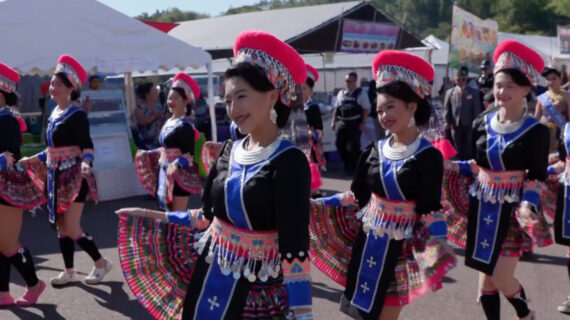
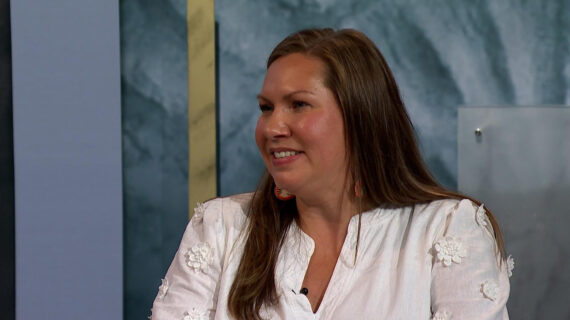

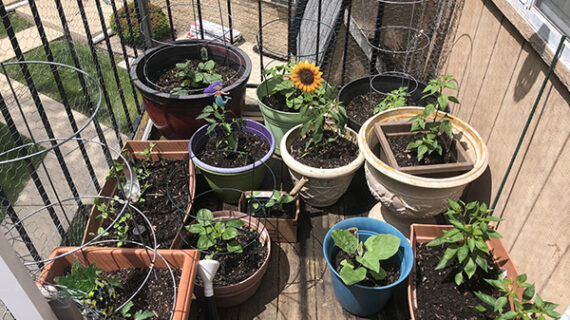
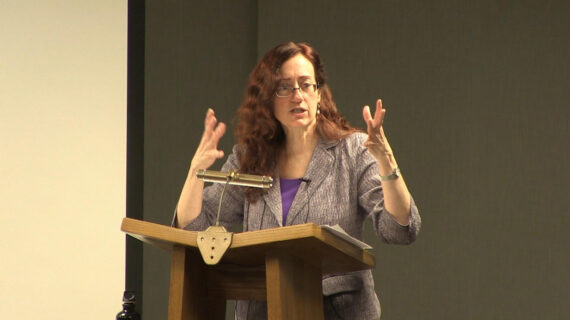
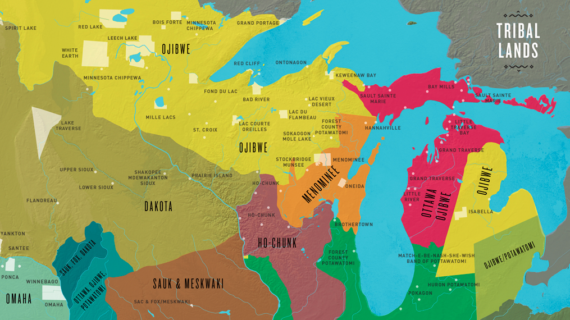
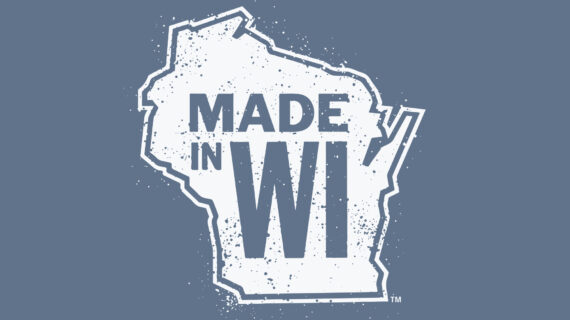
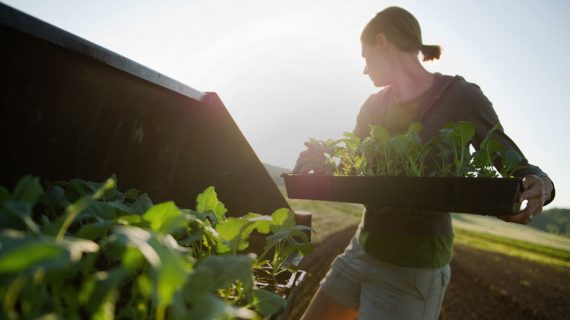
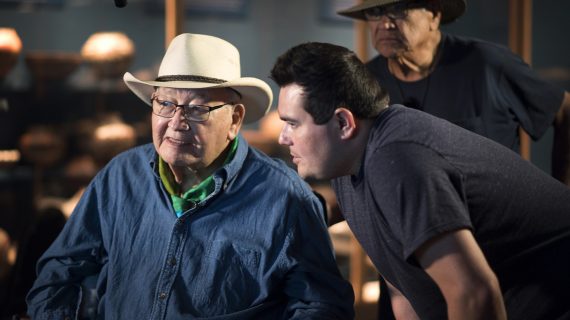


Follow Us